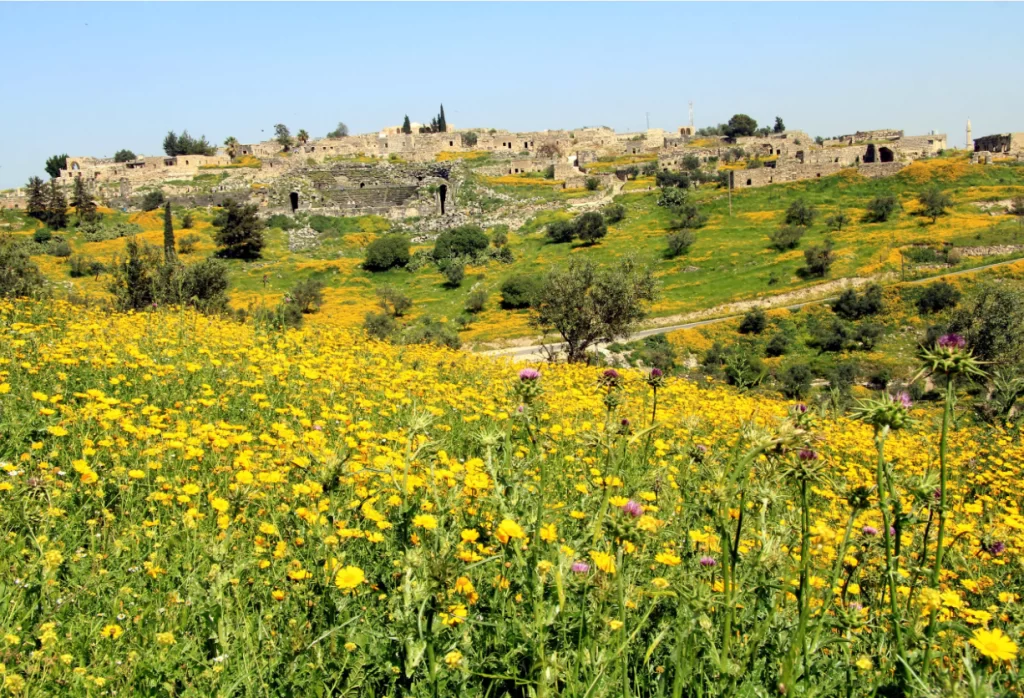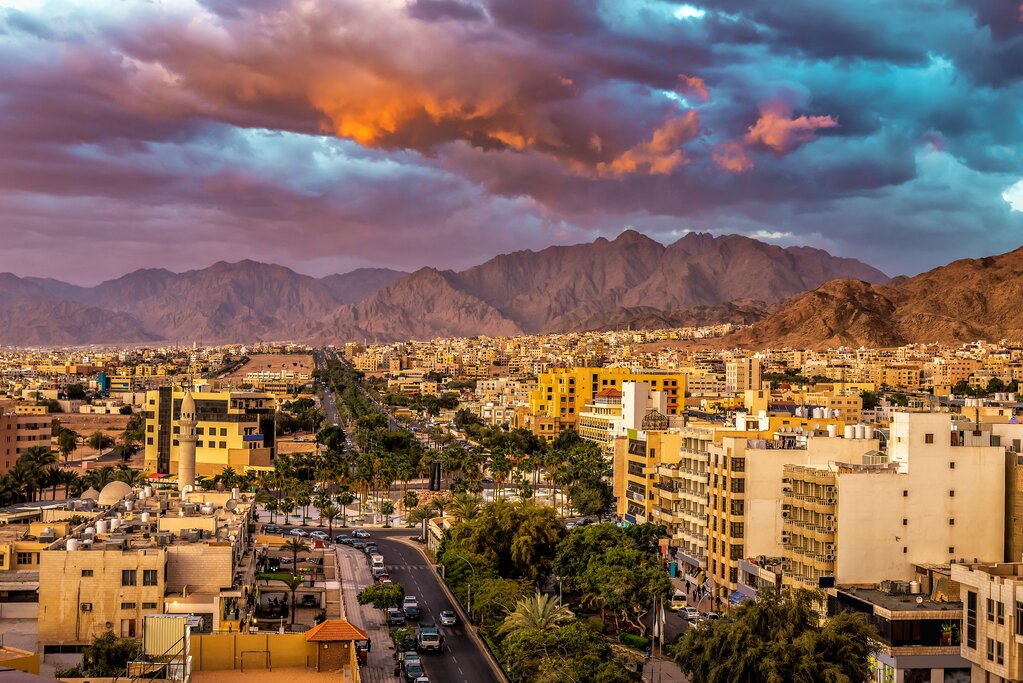Climate
Four Seasons of Jordan
Winter
Weather will be cool in Amman (average Fahrenheit temperatures range from 40-60 during the day to 30’s at night) and it will be warmer at the Dead Sea and the Jordan Valley (60-70 degrees during the day). Sporadic rainfall can occur, with possible snow showers.


Spring
Weather will be warm in Amman (average Fahrenheit temperatures range from 60-70 during the day to 40’s at night) and it will be warmer at the Dead Sea and the Jordan Valley (70-80 degrees during the day). Possible rainfall occurrence in the northern regions.
Summer
Weather will be hot and quite dry in Amman (average Fahrenheit temperatures range from 70-90 during the day to 60’s at night) and it will be very hot at the Dead Sea and the Jordan Valley (80-100 degrees during the day).


Fall
Weather will be warm in Amman (average Fahrenheit temperatures range from 60-70 during the day to 40’s at night) and it will be warmer at the Dead Sea and the Jordan Valley (70-80 degrees during the day).
Hot and dry summers with cool evenings. The Jordan Valley below sea level is warm during winter and extremely hot in summer. Rain falls between November and March, while colder weather conditions occur in December/January.
Required clothing: Lightweight cottons and linens are advised between May and September. Warmer clothes are necessary for winter and cool summer evenings. Rainwear is needed from November to April.
The major characteristic of the climate is the contrast between a relatively rainy season from November to April and very dry weather for the rest of the year. With hot, dry, uniform summers and cool, variable winters during which practically all of the precipitation occurs, the country has a Mediterranean-style climate. In general, the farther inland from the Mediterranean Sea a given part of the country lies, the greater are the seasonal contrasts in temperature and the less rainfall. Atmospheric pressures during the summer months are relatively uniform, whereas the winter months bring a succession of marked low pressure areas and accompanying cold fronts. These cyclonic disturbances generally move eastward from over the Mediterranean Sea several times a month and result in sporadic precipitation.
Most of the East Bank receives less than twelve centimeters of rain a year and may be classified as a dry desert or steppe region. Where the ground rises to form the highlands east of the Jordan Valley, precipitation increases to around thirty centimeters in the south and fifty or more centimeters in the north. The Jordan Valley, lying in the lee of high ground on the West Bank, forms a narrow climatic zone that annually receives up to thirty centimeters of rain in the northern reaches; rain dwindles to less than twelve centimeters at the head of the Dead Sea.
The country’s long summer reaches a peak during August. January is usually the coolest month. The fairly wide ranges of temperature during a twenty-four-hour period are greatest during the summer months and have a tendency to increase with higher elevation and distance from the Mediterranean seacoast. Daytime temperatures during the summer months frequently exceed 36°C and average about 32°C. In contrast, the winter months–November to April–bring moderately cool and sometimes cold weather, averaging about 13°C. Except in the rift depression, frost is fairly common during the winter, and it occasionally snows in Amman.
For a month or so before and after the summer dry season, hot, dry air from the desert, drawn by low pressure, produces strong winds from the south or southeast that sometimes reach gale force. Known in the Middle East by various names, including the khamsin, this dry, sirocco-style wind is usually accompanied by great dust clouds. Its onset is heralded by a hazy sky, a falling barometer, and a drop in relative humidity to about 10 percent. Within a few hours there may be a 10°C to 15°C rise in temperature. These windstorms ordinarily last a day or so, cause much discomfort, and destroy crops by desiccating them.
The shammal, another wind of some significance, comes from the north or northwest, generally at intervals between June and September. Remarkably steady during daytime hours but becoming a breeze at night, the shammal may blow for as long as nine days out of ten and then repeat the process. It originates as a dry continental mass of polar air that is warmed as it passes over the Eurasian landmass. The dryness allows intense heating of the earth’s surface by the sun, resulting in high daytime temperatures that moderate after sunset.
Trusted by
With award winning services we are trusted by many companies








